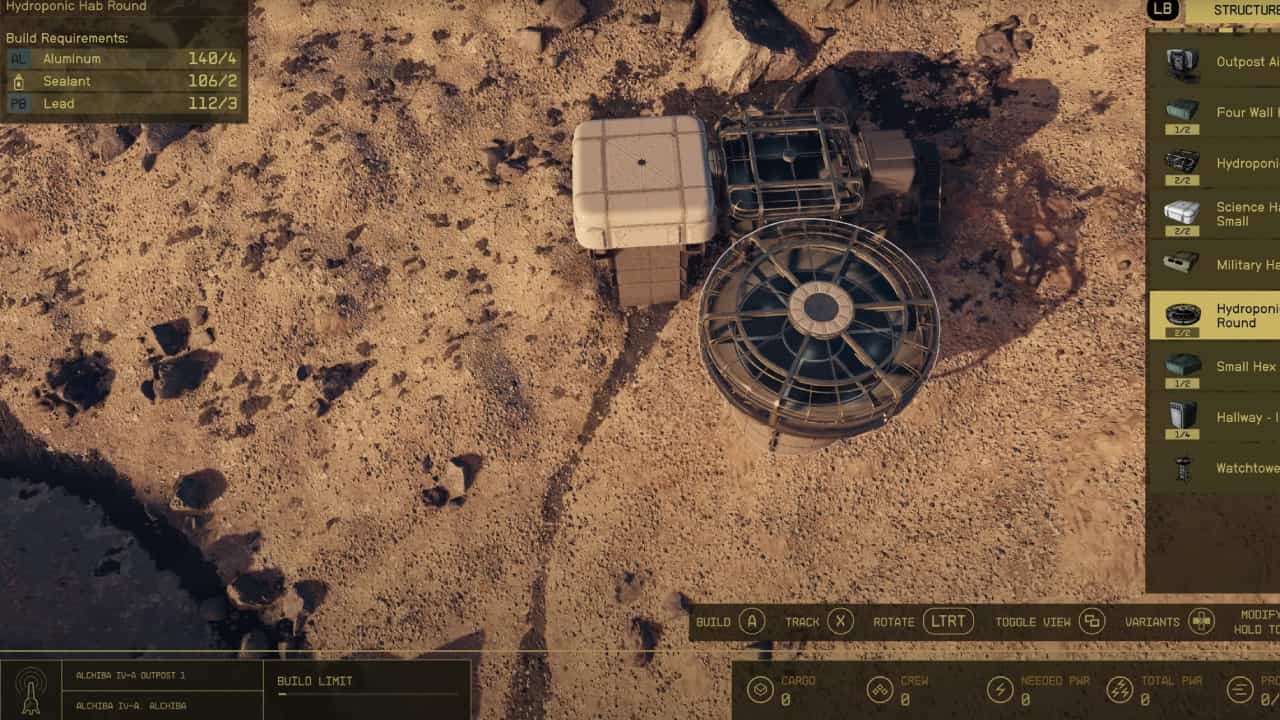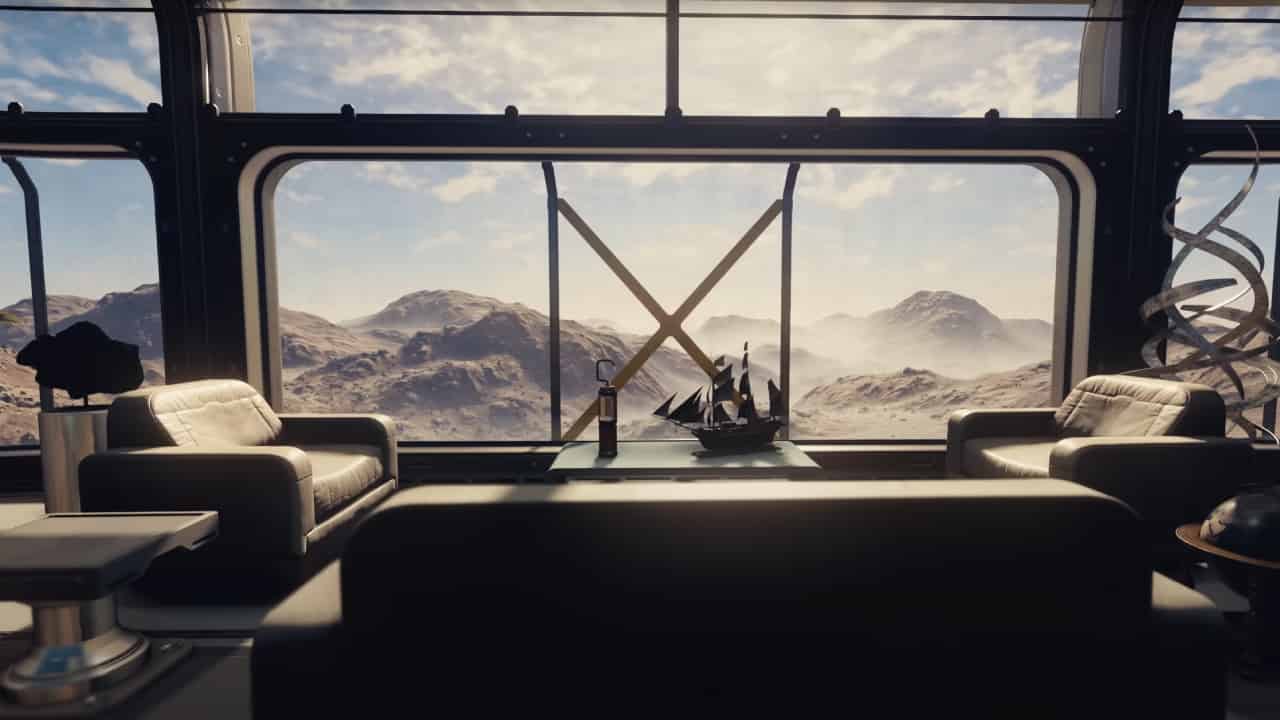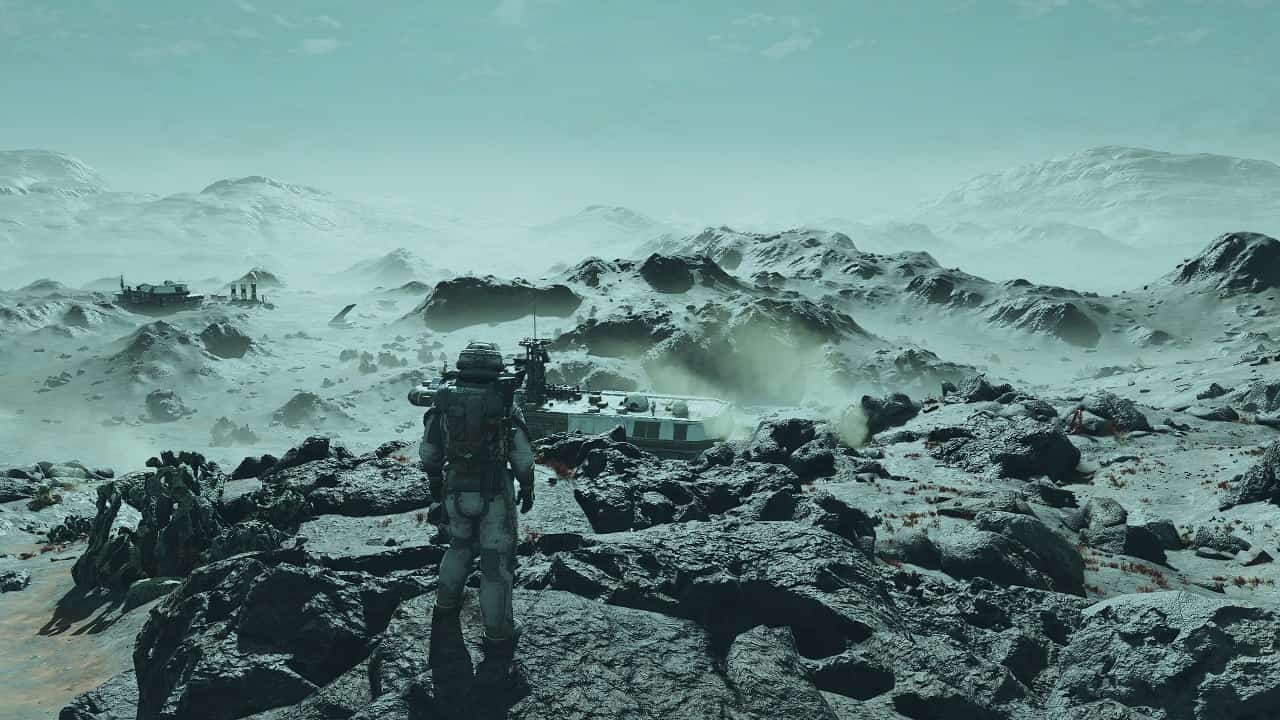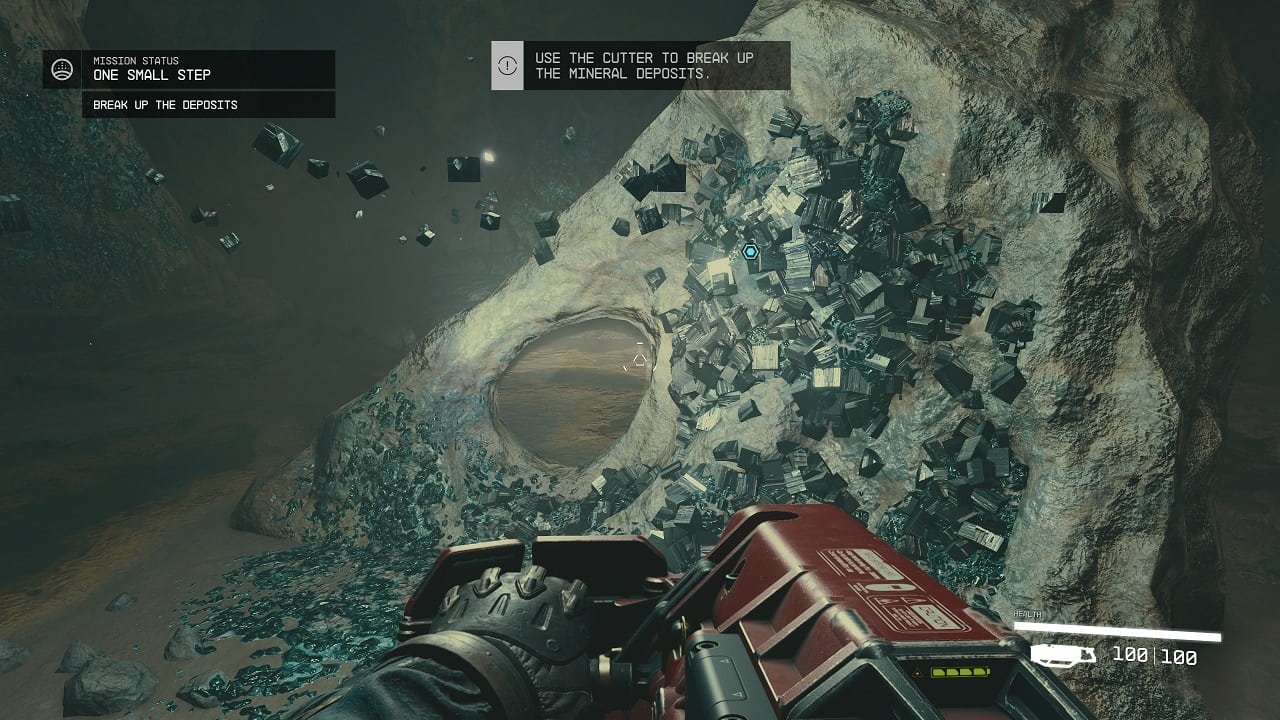Video Gamer is reader-supported. When you buy through links on our site, we may earn an affiliate commission. Prices subject to change. Learn more
Wondering how Starfield outposts work? Following on from the success of base building in Fallout 4 and, to a degree, Elder Scrolls V Skyrim, Bethesda Game Studios’ space RPG reintroduces the mechanic in a fresh way.
Outposts aren’t just snazzy living quarters to keep you safe from the oppressive atmosphere outside, but can be put to work to mine all manner of resources, which you can then use to upgrade your gear or sell for profit. If you’re just starting your interstellar journey, check out our Starfield tips and tricks beginner’s guide. And if you need some new gear, check out the Starfield best weapons and Starfield best armor.

How to unlock and build outposts in Starfield explained
After arriving at the Lodge on Jemison, speak to Vasco after joining the Starfield Constellation faction to learn about building an outpost. Once you’ve done that, here’s a step-by-step guide to build an outpost in Starfield:
- Find a suitable planet to build your outpost on.
- Press F to open the scanner (LB on Xbox) and then R to place the outpost beacon on the world. The outpost beacon is where you will load in whenever you arrive at this outpost location.
- Now, in the build mode, use Tab to pick between modules to build. Switch between categories with the Z and C buttons. Use your mouse to rotate them and then press E to build it. Press Tab to modify existing structures or build new ones.
- Prioritize building a water extractor and a solar array module.
Outpost building in Starfield lets you snap these modules together however you want. This offers unparalleled freedom when it comes to designing your home. Some modules also have different visual styles for the same purpose, letting you customize your outpost visually. Note that modules cost materials like iron and aluminum. You’ll have to buy or gather these resources, load them on your ship, and head to the outpost site to build modules. You can also build multiple outposts, but there is a limited number that you can have at once. Increasing the planetary habitation skill will increase the number of outposts you can have.

Essential outpost resources
The most important thing of all to remember when building an outpost in Starfield is to stock up on resources. You’re going to need raw materials to construct a base, so make sure you know what to bring. Here are the most important resources that you need to bring with you when setting up an outpost.
- Aluminium – this is one of the basic structural resources that almost every component requiures.
- Iron – like aluminium, this is a basic structural resource, and nearly everything you build will need it.
- Water – it probably goes without saying while you’ll need this resource – at least if you’re planning on your outpost being habitable. You’ll need to ensure a steady supply too.
- Lithium – a crucial resource for power-related components like batteries.
- Titanium – most advanced sections for outposts require this durable metal to build.
- Copper – another critical resource for power components. You’ll need it to construct your first solar array.
- Sealant – you’ll need this in order to create functional airlocks and airtight habitat components.
Where can outposts be built?
Outposts can be built almost anywhere, it seems. With over 1000 planets to explore in Starfield, you’ll have an enormous choice of locations to choose from. Once planetside, you can begin building your outpost at any location.
Presumably though, pre-generated structures or settlements will have a radius around them within which you’ll be unable to build. Jemison is a candidate for outposts, but you won’t be able to start knocking down apartment complexes in New Atlantis City to make room for your solar arrays. The same probably applies for all major installations, so don’t expect to be able to create a suburb next to the Freestar Collective faction’s bustling Akila City, for example.

Starfield best outpost locations
Not all planets are created equal when it comes to choosing a destination for your outpost, and you’ll find some are much better suited to hosting bases than others. The best planets to build outposts on in Starfield tend to be those that fill two main criteria. They have stable climates which are favourable to human life, and they are resource-rich – bonus points for any flora and fauna. Aim to settle on any planets that meet both these requirements. If you’re looking for a few simple suggestions though, here are our best ones.
- Linnaeus IV-b – this little moon is a great location if you want somewhere simple but tucked away. It’s got decent proximity important locations in the Settled Systems, and the world itself is temperate in climate and resource rich, with the likes of cobalt, gold, lead, and copper, and rarer resources such as ytterbium and alkanes.
- Jemison – Although inhabited, you can head to an empty spot on this planet and set up shop. Jemison is a great starter choice. It’s got one of the friendliest climates you’ll find, and a decent spread of resources. Being close to New Atlantis is also a benefit for vendors and quests. You’ll be able to build here without needing to unlock anything.
- Andraphon – A moon of the planet Sumati in the Narion System. This place is absoloutely bursting with resources, making it a fantastic early candidate for an outpost. You’ll be able to find iron, helium-3, benzene, europium and aluminium here.
- Zamka – Also in the Alpha Centauri System, this world has a bit more free space than Jemison, while still being close by. It’s also rich in both nickel and copper, with a decent amount of vanadium, cobalt, iron, helium-3, and uranium.
- Nesoi – Found in the Olympus system, it’s incredibly handy because of its location to many of the major locations you’ll visit in the game. You can easily grav jump here from New Atlantis, Neon, Akila City, and more. Combine that with 8 different resources, 8 types of fauna and 5 types of flora, and it’s an excellent choice for your first outpost.
- Kreet – A moon of the planet Anselon in the Narion system, Kreet his a fairly peaceful planet with docile Kreet Grazers and a wealth of important resources. Water, helium, silver, argon, neon, iron, lead, and alkanes can all be found here, making it the perfect place to set up an outpost, as you’ll have all your crafting needs met right on your doorstep.
- Maheo II – In the Maheo system, Mahei is a planet with a decent number of resources, such as water, helium, iron, lead, copper, tetrafluorides and ytterbium. Lacking in flora and fauna, it’s peaceful, and a great place to mine minerals.
- Leviathan IV – Leviathan IV in the Leviathan system plays host to plenty of both organic and inorganic resources. You can find water, aluminum, iron, copper, fluorine, chlorine, and ytterbium here. As well as this, there’s plenty of flora and fauna to harvest, but beware of some of the aggressive local species.
How to find the best mining spots for an outpost
If you’re not keen on any of our suggestions above, or looking to build another outpost, it’s important to aim for locations that are rich in resources. This information isn’t too difficult to ascertain. First, head to a planet or moon of your choice. When you get close, open up the planet map menu and perform a planet scan (X on Xbox, or R key on PC). This will reveal the resources on the planet, and where they can be found. Each resource is colour coded. For the best mining spots for an outpost, you want to aim to set down on an area where as many colours as possible overlap or converge.

Starfield outpost modules list
There are a variety of modules you can build in your Starfield outpost. Here are the options you can pick from:
- Extractors: These modules are essential to mine resources on this planet.
- Power: This includes power-generating modules like the Solar Array to power your modules.
- Storage: These modules deal with storage. The Transfer Container is a good pick as it lets you stash your inventory here. Remember to create an output link from the mining Extractor modules to the Transfer Container to automatically send resources here.
- Structures: This covers a variety of structures like living quarters, science labs, and greenhouses.
- Crafting: Workbenches, Research labs, and Cooking Stations come under this category. The Science Hab helps with research and the Hydroponics Hab is also a good pick. Setting up research stations can help with research projects later on.
- Defenses: Turret options here let you stay safe from Crimson Fleet raids or bounty hunters for those who picked the Wanted trait. Space pirates are a common threat in Starfield. Consider investing in a Military Hab.
- Furniture: Visual accessories that enhance your home’s appearance. This ranges from fancy beds to cabinets and fridges.
- Decorations: Extra visual flourishes like a Dart board, rugs, racks, etc. to be placed inside other modules.
- Displays: Lets you display other items you’ve collected on your journey.
- Miscellaneous: Landing Pads, Crew Stations, and Scan Boosters can be found here.
Here are some of the material costs of outpost modules we consider essential in Starfield:
- Beacon – Free
- Solar Array – 3 Copper, 4 Aluminum, 2 Beryllium
- Water Extractor – 4 Nickel, 3 Iron, 5 Aluminum
- Industrial Workbench – 4 Aluminum, 3 Iron
- Small Habitat – 6 Aluminum, 4 Lead, 3 Sealant
- Airlock (for hostile atmosphere) – 3 Aluminum, 2 Lead, 3 Sealant
- Transfer Container – 8 Iron, 4 Lubricant, 5 Tungsten
- Resource Extractor – 5 Iron, 4 Aluminum, 2 Tungsten

Best Starfield outpost modules
The Transfer container and the Extractors are the best Starfield outpost modules to prioritize. The former lets you send your items here from your ship while Extractors let you mine the planet for essential resources. This is important because modules require materials to build. An outpost airlock is essential in hostile planets with rough weather and unfavorable living conditions.

Running outposts in Starfield
Operating and maintaining an outpost is arguably where the bulk of the challenge will lie. There are two main factors to consider when running an outpost: the maintenance of the outpost itself, and the running of its machinery, modules, and equipment.
Outpost stats
Depending on what you install in your outpost, there are various outpost stats that will determine what your outpost is capable of. These stats are:
- Cargo – the amount of storage your outpost has
- Crew – the number of crew members your outpost can have
- Needed PWR – the amount of power required to run the outpost
- Total PWR – the total amount of power being generated
- Production – the amount of resources that your outpost is generating
- Build limit – the budget you have available to add to your outpost
Maintaining an outpost
For day-to-day outpost operations, you have two options. The first is to operate modules or equipment manually, and this is probably what you’ll need to do when first starting out on an outpost’s construction. You’ll want to carefully consider setting up a power grid at this stage too, as an expansive and robust energy system will save you headaches later on as you build power-hungry structures. Or you could assign crew members to automate tasks for you.
A major aspect of outpost building you’ll need to pay attention to is the use of crew members and robots. From the start, you can only place up to three robots and crew, but by putting some skill points into the Outpost Management skill, you can place additional robots and crew into your outposts. Check out how to assign crew to an outpost in Starfield for more information on how this works.

How to set up a Cargo Link between outposts in Starfield
Here’s how to set up a Cargo Link to transfer items between outposts in Starfield:
- Build two outposts in the game.
- Go to an outpost and press Tab to bring up the in-game building menu. Select Cargo Link.
- It requires the following resources: 2 Beryllium, 2 Zero Wire, 12 Aluminum, 20 Iron
- Now place the Cargo Link where you want.
- Place another Cargo Link at the second Starfield outpost.
- Climb and interact with each Cargo Link to connect them.
How to rename outposts in Starfield
To rename an outpost in Starfield, stand near the outpost beacon and press R (X on Xbox). Remember that you only have to tap it as holding the button deletes the entire outpost. Try to keep outpost names interesting so that you don’t lose track of their locations and unique features.

Best Starfield outpost skills
While you don’t have to spec your character in a specific way to use outposts, you can optimize your build to improve your outpost-building. Here are the best Starfield outpost skills:
- Outpost Management (Social)
- Outpost Management (Science)
- Planetary Habitation (Science)
- Research Methods (Science)
Outpost Management (Social)
Here’s what each rank in this skill provides:
- Rank 1: Construct improved outpost modules and research additional modules at a Research Lab.
- Rank 2: Research and construct superior outpost modules.
- Rank 3: Research and construct cutting-edge outpost modules.
- Rank 4: Outpost modules cost 50% fewer resources to build.
Outpost Management (Science)
Here’s what each rank in this skill provides:
- Rank 1: Extra cargo links can be placed at outposts.
- Rank 2: Extra robots can be constructed at outposts.
- Rank 3: Extra crew can be assigned at outposts.
- Rank 4: Outpost extractors produce twice as quickly.
Planetary Habitation (Science)
Here’s what each rank in this skill provides:
- Rank 1: Build outposts on planets with extreme temperatures (Deep Freeze and Inferno). Boost the maximum number of outposts you can build by four.
- Rank 2: Build outposts on planets with extreme pressure. Improve the maximum number of outposts you can build by eight.
- Rank 3: Build outposts on planets with toxic or corrosive atmospheres. Boost the maximum number of outposts you can build by 12.
- Rank 4: Build outposts on planets with extreme gravity. Increase the max number of outposts you can build by 16.
Research Methods (Science)
Here’s what each rank in this skill provides:
- Rank 1: Resources required to craft items and complete research projects reduced by 10%.
- Rank 2: Resources required to craft items and complete research projects reduced by 20%.
- Rank 3: Resources required to craft items and complete research projects reduced by 40%.
- Rank 4: Sudden developments during research are twice as common. Resources required to craft items and complete research projects reduced by 60%.
That’s everything we’ve got for you on Starfield outposts, how to build them, and how to run them. If you need some upgrades for your outpost, we have guides on how to get adhesive, lubricant, adaptive frames, high tensile spidroin, and microsecond regulators. For ship upgrades, check out ship manufacturers, best ships, best ship parts, best reactors and starship weapons. And if you want to get question, the Sabotage, Delivering Devils, Absolute Power, Surgical Strike, Operation Starseed and Entangled missions are all great choices.
Where can I build outposts in Starfield?
You can an outpost on any planet or moon in Starfield other than gas giant planets.
How do I build an outpost in Starfield?
To build an outpost in Starfield, you need to open the scan menu and place down a beacon. From here, you can start building infrastructure and modules.
What is an outpost in Starfield?
An outpost is a player-made structure in Starfield that acts as a base of operations on a planet. Outposts can harvest raw materials, generate income, and offer special upgrades for gear and starships.

